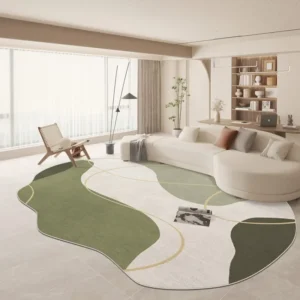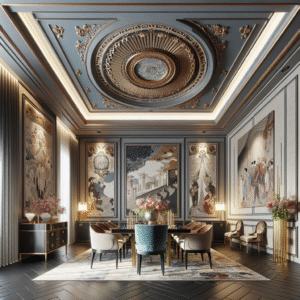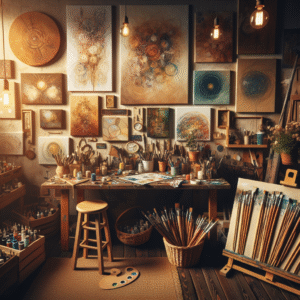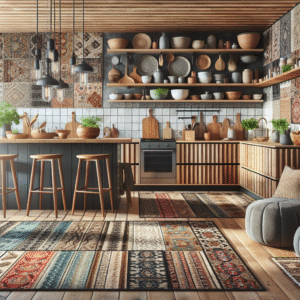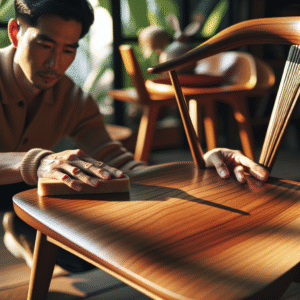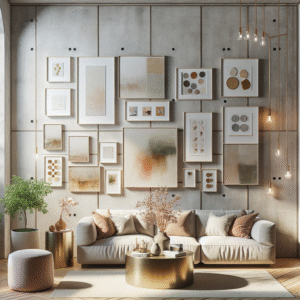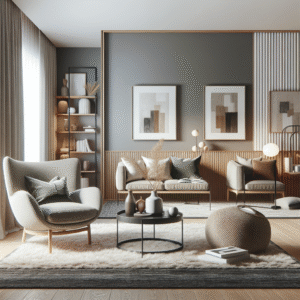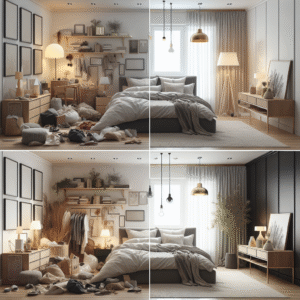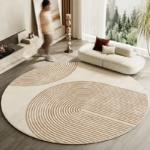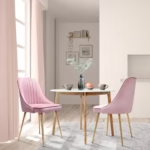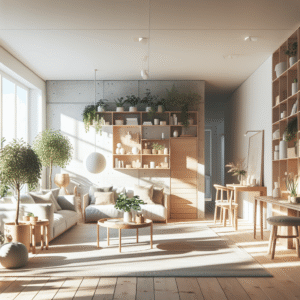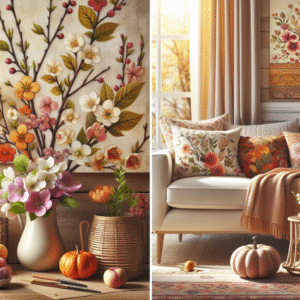Transforming Studio Spaces: Visual Zoning with Rugs for Style and Function
Are you struggling to define separate areas in your studio space? Visual zoning can turn your open area into a multi-functional haven. Using rugs as boundary markers is a stylish, functional solution that not only enhances aesthetics but also improves usability. In this comprehensive article, you’ll learn how to effectively use rugs for visual zoning, transforming your studios into stylish and functional environments.
Here’s a roadmap of what we’ll cover:
- Understanding Visual Zoning
- The Role of Rugs in Studio Spaces
- Choosing the Right Rugs for Your Studio
- Implementing Effective Visual Zoning
- Decor Tips and Inspiration
- Maintaining Your Rugs and Space
Understanding Visual Zoning
Visual zoning is a design technique that uses physical elements to create distinct areas within an open space. This method helps in organizing activities and creating a sense of order. Whether you’re working in a home studio, a workshop, or an office, visual zoning can effectively delineate different functional spaces.
Benefits of Visual Zoning
Implementing visual zoning offers several benefits:
- Improved organization of space
- Enhanced functionality
- Increased aesthetic appeal
- Better sound control
The Role of Rugs in Studio Spaces
Rugs are not just decorative elements; they serve as powerful tools for visual zoning. By placing rugs strategically, you can create defined areas that invoke different moods and functionalities.
Types of Rugs for Zoning
When it comes to selecting rugs for zoning, consider:
- Area Rugs: Perfect for larger spaces, offering a soft boundary.
- Runner Rugs: Ideal for hallways or narrow spaces, guiding movement.
- Outdoor Rugs: Best for studios that benefit from an airy feel.
Rug Sizes and Shapes
Choosing the right size and shape is crucial:
Round rugs work well in smaller nooks, while rectangular ones can outline larger areas. Ensure any rug used for zoning complements the overall decor of your studio.
Choosing the Right Rugs for Your Studio
Selecting the ideal rug requires consideration of style, function, and materials. Here are some tips:
Consider Your Studio’s Style
Your rug should complement the existing decor of your studio. Choose colors and patterns that enhance your overall theme.
Think About Wear and Tear
If your studio experiences high foot traffic, opt for durable materials like wool or synthetic fibers.
Evaluate Comfort
Ensure that the rug is comfortable underfoot, especially if you plan to spend extended periods in specific areas.
Implementing Effective Visual Zoning
Once you’ve selected your rugs, it’s time to implement zoning effectively. Here’s how:
Define Functional Areas
Decide which activities will occur in each zone. For example, designate a creative workspace or a lounge area with appropriate rugs.
Layering for Depth
Layer rugs for added texture and interest, but be careful with the edges to avoid tripping hazards.
Using Color to Differentiate
Use varied colors or patterns to visually separate each zone, making transitions clear and intentional.
Decor Tips and Inspiration
Seeking inspiration for your studio space? Here are some creative ideas:
Mix and Match Styles
Don’t shy away from combining different rug styles that speak to various zones. This creates an eclectic vibe while still ensuring functionality.
Utilize Accessories
Add seating arrangements, plants, or art pieces that complement the rugs and further define each area.
Artistic Arrangements
Consider unique arrangements, such as overlapping rugs or placing a smaller rug on top of a larger one for added creativity.
Maintaining Your Rugs and Space
To keep your rugs and the entire studio looking great, follow these maintenance tips:
Regular Cleaning
Vacuum your rugs regularly to keep them free of dust and dirt.
Spot Clean Stains
Act quickly on spills; spot clean with appropriate cleaners based on rug material.
Rotate Rugs
Rotate rugs periodically to ensure even wear from foot traffic.
FAQ Section
What is visual zoning?
Visual zoning is a technique that uses physical features, like rugs, to define distinct areas within an open space, enhancing organization and functionality.
How can rugs help in a studio?
Rugs can create boundaries, improve comfort, and add aesthetic value, which helps in organizing different functional areas within a studio.
What type of rug is best for high traffic areas?
Durable rugs made from materials like wool or synthetic fibers are ideal for high traffic areas due to their resilience.
How do I choose the right size rug?
The right size rug should extend at least 12-18 inches beyond the furniture to create a cohesive look in a defined area.
Can I layer rugs?
Yes, layering rugs can add texture and depth to your space, but ensure they are safely arranged to avoid tripping.
Content Disclaimer
The information provided in this article is educational in nature. It is not intended as professional advice, and individuals should consult relevant experts when making specific decisions.
Categories
- Accent Walls & Ceilings (10)
- Art Curation & Gallery (26)
- Bedding Style Trends (42)
- Bedroom Makeover (29)
- Bohemian & Eclectic Styles (9)
- DIY & Budget-Friendly Decor (8)
- Eco-Friendly Design (10)
- Furniture Care (29)
- Home Decor & Design Ideas (101)
- Home Wellness Spaces (9)
- Integrated Outdoor Living (8)
- Kids and Nursery Decor (9)
- Living Room Decor (30)
- Minimalist & Japandi Style (12)
- Mix & Match Techniques (30)
- Modern & Contemporary Design (8)
- Rug Sizing & Placement (29)
- Seasonal Home Decor (31)
- Small Space Solutions (13)
- Wall Art & Painting Tips (31)
Recent Posts
Recent Comments
Archives
Product Gallery
-
 African Grassland Animal Scenery Poster Autumn Canvas Painting Lion Zebra Giraffe Prints Pictures for Modern Home Room Decor
African Grassland Animal Scenery Poster Autumn Canvas Painting Lion Zebra Giraffe Prints Pictures for Modern Home Room Decor
-
 Large Area Green Rugs for Bedroom Nordic Living Room Decoration Shaped Carpet Irregular Plush Lounge Rug Home Thick Washable Mat Rated 5.00 out of 5$57.07 – $359.83Price range: $57.07 through $359.83
Large Area Green Rugs for Bedroom Nordic Living Room Decoration Shaped Carpet Irregular Plush Lounge Rug Home Thick Washable Mat Rated 5.00 out of 5$57.07 – $359.83Price range: $57.07 through $359.83 -
 Nordic Style Rugs for Bedroom Morandi Living Room Decoration Carpet Large Area Geometry Lounge Rug Home Cloakroom Non-slip Mat Rated 5.00 out of 5$40.98 – $620.81Price range: $40.98 through $620.81
Nordic Style Rugs for Bedroom Morandi Living Room Decoration Carpet Large Area Geometry Lounge Rug Home Cloakroom Non-slip Mat Rated 5.00 out of 5$40.98 – $620.81Price range: $40.98 through $620.81







